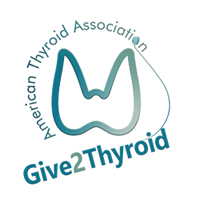BACKGROUND
Papillary thyroid cancer is the most common type of thyroid cancer, making up to 80% of all thyroid cancers. In 2015, the American Thyroid Association issued updated guidelines for the management of differentiated thyroid cancer. These guidelines propose that thyroid lobectomy, which involves removing only the thyroid lobe involved with cancer, may be adequate for patients with low-risk papillary thyroid cancer. Low-risk papillary thyroid cancers were defined as cancers larger than 1 cm but smaller than 4 cm in size, with no evidence of extension of the cancer beyond the thyroid or spread to the lymph nodes of the neck.
The risk assessments recommended in the ATA guidelines refer to risk of cancer recurrence as opposed to the risk of death. Previous studies showed conflicting evidence regarding the impact of the extent of surgery on overall survival and the risk of death in these patients. The goal of this study was to examine whether overall survival is affected by extent of surgery for the two most common variants of papillary thyroid cancer (classical and follicular- variant) when categorized by cancer size.
THE FULL ARTICLE TITLE:
Rajjoub SR et al 2018 Thyroid lobectomy is not sufficient for T2 papillary thyroid cancers. Surgery. Epub 2018 Feb 13.
SUMMARY OF THE STUDY
The authors of this study used patient data from the National Cancer Database (NCDB), which contains information from approximately 70% of newly diagnosed cancer patients in the United States. A total of 33,816 patients who underwent a lobectomy or total thyroidectomy for low-risk papillary thyroid cancer (classical or follicular variants) between 2004 and 2008 were included in the study. Of the 22,899 patients with classical papillary thyroid cancer, 21,589 (94.3%) had a total thyroidectomy and 1310 (5.7%) had a lobectomy. Of the 10,917 patients with follicular-variant papillary thyroid cancer, 9392 (86.0%) patients underwent a total thyroidectomy and 1310 (14.0%) a thyroid lobectomy. Patients who were younger than 18 years of age, had a cancer size ≥4 cm and/ or had lymph node involvement were excluded. Overall survival was analyzed based on cancer size, categorized as 1.0-1.9 cm, 2.0-2.9 cm and 3.0-3.9 cm.




